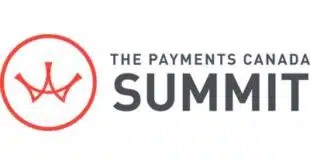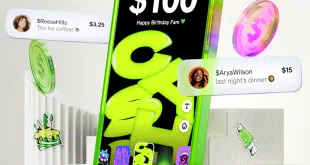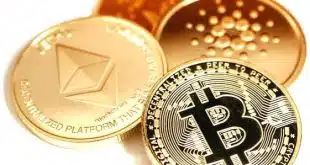Lauri Giesen
The early battles in the debit-network war triggered by the Durbin Amendment took a big toll on Visa’s Interlink brand, but now Visa has converted an obscure program into a powerful weapon. How are the EFT networks responding?
Before April 2012, making a decision about which network over which a PIN-debit transaction would go was a quite simple affair. The choice was the card issuer’s and often depended on which electronic funds transfer network was affiliated with the signature-debit brand on the front of the issuer’s card. So if an issuer had an exclusive relationship with Visa Inc., for example, a point-of-sale PIN-debit purchase with that issuer’s card would route the transaction over Visa’s Interlink PIN-debit network.
Exclusive Visa-Interlink pairings became very common over the past decade and helped Interlink grow to acquire, by some estimates, more than 50% of the POS debit market. Fewer but similar such exclusive pairings existed with MasterCard Inc. and its Maestro PIN-debit network.
Debit card issuers that didn’t have exclusive relationships with a signature network could use what are still referred to as regional EFT networks such as Star, Pulse, NYCE, Accel and Shazam—although they’ve grown into national or near-national ones—or some smaller networks for PIN-debit transactions.
Over the years, the EFT networks, as well as Visa and MasterCard, competed for issuers’ loyalty by offering ever-higher interchange rates (“The Narrowing Debit Card Interchange Gap,” September, 2009).
But the Durbin Amendment, part of 2010’s sweeping Dodd-Frank financial-reform law, outlawed exclusive arrangements between payment networks and card issuers, and transferred the routing choice from the issuer to the merchant acquirer or merchant. The law’s intent was to lower merchants’ card-acceptance costs by giving them the ability to get transactions onto networks with lower interchange rates.
Specifically, Federal Reserve regulations implementing the amendment and effective in April 2012 said a debit card must provide access to at least one network unaffiliated with the signature network. Issuers typically complied by adding another PIN-debit network to their cards.
“Durbin really gave the merchants and merchant acquirers more power in routing,” says consultant Eric Grover, principal of Minden, Nev.-based Intrepid Ventures. “Before, the networks tried to win favor with the card issuers by offering them higher revenue rates. Now, the merchants have some say.”
Adds Patricia Hewitt, director of the Debit Advisory Service at Maynard, Mass.-based Mercator Advisory Group Inc.: “The shift of control from issuers to merchants rebalanced the market. Now networks have to work to be more attractive to retailers, and merchants have realized they are in a negotiating position to get better terms from the networks.”
‘Competitive Pressure’
This new network fight for retailer acceptance has dramatically changed the competitive landscape. A routing war between Visa, MasterCard, and EFT networks large and small broke out, and nothing has been the same since (“The Great Debit Network Reshuffle,” October, 2012).
“We’ve seen a lot of competitive pressure during the last year because of Durbin,” says Dan Kramer, senior vice president of marketing and merchant services at Johnston, Iowa-based Shazam, one of the largest EFT networks still owned by its member financial institutions.
With the outlawing of exclusive network-issuer agreements, Interlink’s payment volume fell 54% in the third quarter of fiscal 2012 ended June 30. In the quarters that followed, Visa reported year-over-year declines nearly as great and said they wouldn’t bottom out until the routing provisions had been in effect for a year.
But Visa, the world’s largest payment network, wasn’t about to roll over and play dead. While conceding that some of Interlink’s losses would be permanent, Visa introduced other programs to draw transaction traffic, including its so-called Fixed Acquirer Network Fee, or FANF. That program, which Visa said would reward merchants with lower variable costs in return for sending more volume to Visa, generated no small measure of controversy in the merchant-acquiring world (“What’s This FANF Thing All About?” September, 2012).
Just as important, Visa also dusted off an existing but obscure program dubbed PIN-Authenticated Visa Debit, or PAVD. That program allows a PIN-debit transaction to be routed over the VisaNet network if a debit card has the Visa mark for signature debit but does not have the Interlink logo.
Although PAVD had been around for years, industry sources say only starting last year did Visa use the program to attract transactions away from competing PIN-debit networks. Now-retired Visa chief executive Joseph Saunders first mentioned PAVD would get a new lease on life in October 2012. Transactions processed under the program would be counted as Visa debit transactions, not Interlink ones.
To make the program work, Visa had to offer more competitive pricing incentives to high-volume merchants and merchant processors.
“PAVD is not new, but in the past it was just used by just a few institutions in some isolated situations. But now Visa is using this to protect its PIN transaction base. Visa has cut deals so that merchants and merchant processors will choose to route transactions via Visa,” says Grover.
And Durbin appears to be the reason why.
“My understanding is that PAVD has been around for years but is drawing more attention in the last year due to routing regulations under Durbin,” says Pete Korpady, senior vice president of global network management for First Data Corp., which owns the Star EFT network. “As part of the April 2012 VisaNet Business Enhancements release, all Visa debit issuers were required to certify that they are capable of validating and authorizing PAVD transactions.”
Rival networks started to see the effect.
“Visa was in effect saying to merchants, ‘give us more volume and we will provide incentives to make our option more attractive,’” says Neil Marcous, president of the NYCE Payments Network and executive vice president at its parent company, Jacksonville, Fla.-based processor Fidelity National Information Services Inc. (FIS).
Significant Shift
As a result of this new use of PAVD, by early fall many EFT networks started to see their transaction counts drop significantly as they lost volume to Visa.
“If things continued the way they were, it could have affected our volumes dramatically,” says Marcous, adding that NYCE saw an “immediate and significant” shift in its volume to Visa from late August through October.
Shazam also felt PAVD’s bite.
“I’d be lying if I said we had not seen the effect,” Kramer says.
EFT networks began to fight back by offering incentive pricing programs of their own, or adding services.
“We looked at the various tier pricing we had offered and found sometimes we could lower our fees, and other times we could work closer with the merchant to help them in other ways. We worked with the merchants to show where sometimes we were already cheaper and the merchant didn’t know it, and sometimes we found where we could make an adjustment,” Marcous says.
By November, Marcous says NYCE was able to recover all of its lost volume.
Shazam also has seen volume gains in some areas in recent months as it increased its competitiveness, Kramer says.
Most of the price negotiations by Visa and the EFT networks have centered on the 125 largest retail chains, Marcous says. He notes that the top 60 retailers alone account for 70% of PIN-debit volume.
Visa continues to court merchants. Although Visa (as did MasterCard) declined interview requests for this story, its new chief executive, Charles W. Scharf, talked about the importance of working closer with merchants during the company’s earnings conference call in February.
“It starts with engaging them very differently,” he said. “I’m not talking through the courts and through D.C., I’m talking directly. We need to balance their issues with others in our value chain,” he said.
Besides pricing, EFT networks have looked at what else they can offer merchants to be competitive.
“If the regional EFT networks do not do something to add value, they are toast,” says Grover. “They have to add more value to what they provide or this just becomes a switch-fee game.”
‘New Models’
And many of them have done just what Grover suggests. Networks are looking at everything from more fraud-control services to enhanced data analysis for their customers.
“We’re looking at our value proposition beyond pricing,” says Kramer. “We have the capability to do other things.”
Some EFT networks even announced plans to offer PINless debit card programs to challenge what had been the private domain of Visa and MasterCard in the signature-debit world, where many transactions under $50 no longer need a signature. Although EFT executives often have been critical of signature debit, noting it has higher fraud rates than PIN debit, they also are looking for faster ways to authorize small, low-risk transactions.
“We’re building new models for risk management of these type of transactions. And we know most fraud does not occur on transactions of this size,” Marcous says.
NYCE has announced plans to offer a PINless debit service for transactions under $50. In the test phase now, NYCE plans to make the offering available on a larger scale early this summer. The limitations on value should not be too difficult as Marcous estimates 80% of total signature debit volume currently consists of transactions under $50.
“This could open a floodgate of transactions for us. Right now signature debit is about 60% of all debit transactions and it gives us an entry to this large market,” he says.
Star also recently announced plans to develop Star RapidFlash to enable PINless authorization on low-risk card-present transactions under $50.
Shazam’s PINless program is for transactions under $25 and has a lot of appeal to retailers that want to speed up checkout, Kramer says.
One interesting ramification of the EFT networks getting into PINless debit is that while PIN debit now has multiple routing options, soon signature could as well.
“Initially, the regulators wanted two logos on signature debit as well but they found that was just not possible under the current landscape,” Marcous says. “But as more EFT networks offer PINless debit, soon every issuer could have access to two PIN and two signature logos. Ultimately, the regulators got what they were looking for.”
Other technologies that the EFT networks are looking at to improve their competitiveness include mobile payments and person-to-person payments. As an example, Shazam is working with 215 financial institutions to allow mobile payments for service providers and retailers that do not have easy access to phone lines.
Regardless of the approach the networks take, a much more competitive landscape has evolved.
An EMV Routing Solution for the EFT Networks?
Another area where competitive forces are taking hold in debit involves the future routing of Europay-MasterCard-Visa (EMV) chip card transactions in the U.S.
All the major networks have announced plans to replace magnetic-stripe cards with more secure EMV chip credit and debit cards. But making EMV compliant under the Durbin Amendment posed a problem. Unlike mag-stripe cards, the global EMV standard, which is widely deployed in Europe, Canada and Asia, is proprietary to one card brand.
That is in contrast to the Durbin requirement that debit cards offer merchant a choice of at least two unaffiliated networks on which to route transactions.
Both Visa Inc. and MasterCard Inc. had proposed making their EMV technology available to the electronic funds transfer networks in order to be compliant with Durbin. Those offers got a cold reception from the EFT networks.
Instead, in April, the Secure Remote Payment Council (SRPc), which consists of many of the largest EFT networks, announced it would adopt a common U.S. debit application identifier by licensing Discover Financial Service’s D-Payment Application Specification (D-PAS).
Paul Tomasofsky, SRPc president, says the group had looked at developing its own solution, but rejected that option due to its high cost and lengthy development time.
Now Discover, owner of the Diners Club International network, which has considerable experience with chip cards because Diners operates worldwide, will make its technology available at no cost to the council. Members of SRPc will form a new legal entity with a governing board consisting of network members. That board will establish its own operational rules, according to Troy Bernard, global head of chip payment products for Riverwoods, Ill.-based Discover.
The council had considered the options proposed by Visa and MasterCard and determined the biggest obstacle to them was the governance of the technology, Tomasofsky says.
“Visa and MasterCard set the terms of licensing and there is no guarantee there would not be a change in the future. With Discover, they are contributing their technology to a consortium of our members that will govern the use. No one member will have the ability to alter the terms of the agreement,” Tomasofsky says.
That appears to be a big issue for many of the networks.
“We like the consortium aspect of this arrangement. The consortium will decide what is best for all parties, not just for some,” says Dan Kramer, vice president of the Shazam EFT network.
Still, the agreement is not exclusive. Visa and MasterCard are invited to join the coalition as well, Tomasofsky says.
Members of the coalition include 10 of the largest regional EFT networks that control more than half of U.S. PIN-debit transaction volume. The largest PIN-debit network missing is Visa’s Interlink.
Tomasofsky says additional networks are expected to join in the future. Current members include AFFN, ATH, Co-Op Financial Services, Jeanie, NETS, NYCE, Presto!, Pulse, Shazam, and Star.




